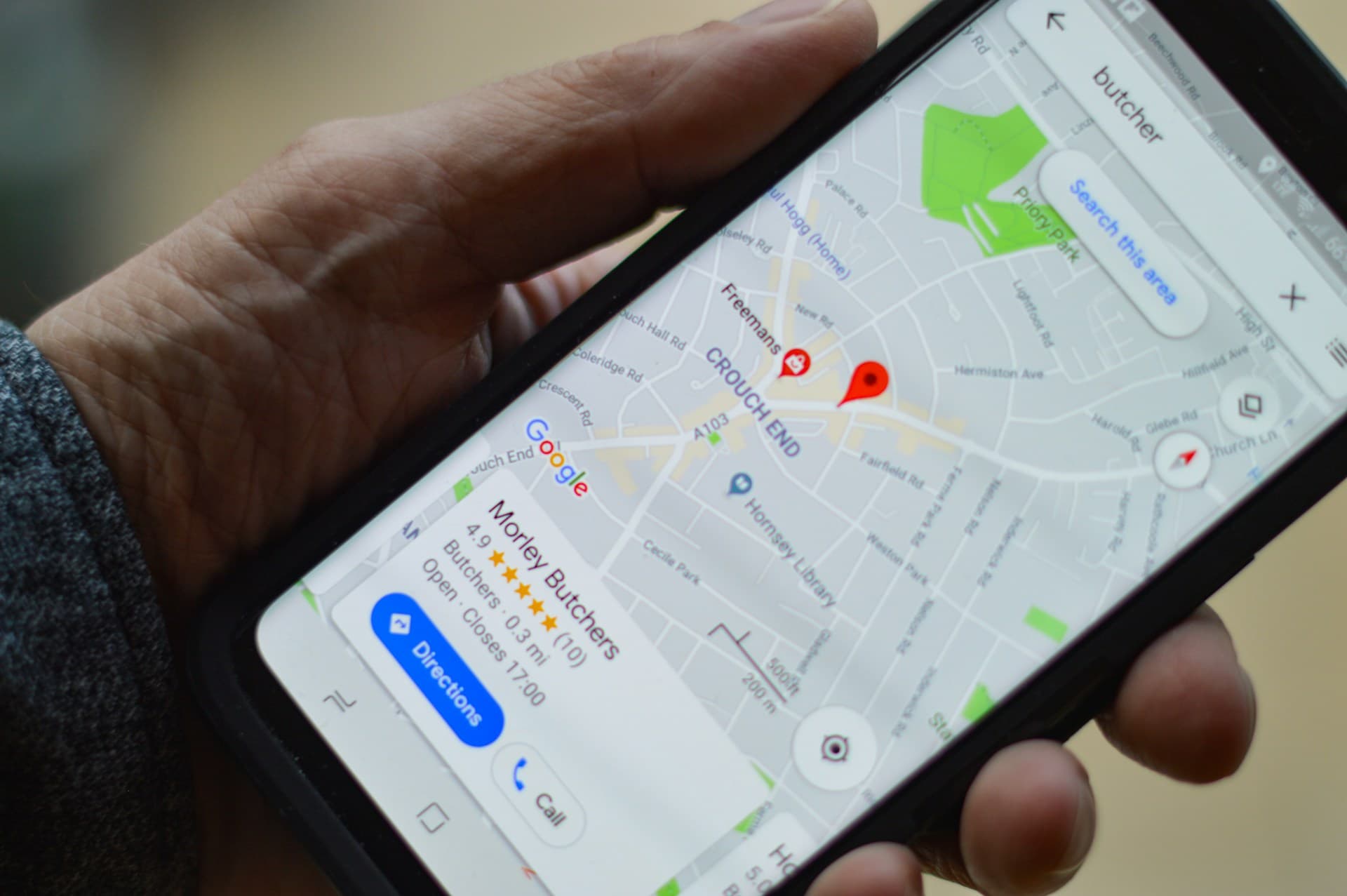When someone in your area searches for the services you provide, does your business appear at the top of the results? If not, you're invisible to the customers who need you most—those actively looking for solutions you provide, wallet in hand, ready to buy.
Local SEO isn't just another marketing buzzword. It's the difference between thriving and struggling for location-based businesses. While your competitors fight over expensive ads, smart businesses use local SEO to capture customers at the exact moment they're ready to purchase.
The best part? Local SEO levels the playing field. A small restaurant can outrank national chains, and a local plumber can dominate search results ahead of franchise operations—if they understand how to optimize correctly.
Why Local SEO Matters More Than Ever
Local search behavior has fundamentally changed how customers find businesses. Google reports that 76% of people who search for something nearby visit a related business within 24 hours, and 28% of those searches result in immediate purchases.
Your potential customers aren't browsing yellow pages or asking neighbors for recommendations anymore. They're pulling out their phones, typing "best pizza near me" or "emergency plumber," and choosing from the businesses that appear in those crucial top results.
Local SEO puts your business in front of these high-intent customers at the perfect moment—when they're actively looking for what you offer and ready to take action.
Understanding Local Search Results
Before diving into optimization tactics, you need to understand what customers see when they search locally. Google displays three types of results for local searches:
The Local Pack (also called the Map Pack) shows three businesses prominently at the top with map locations, ratings, and key information. This prime real estate captures most clicks for local searches.
Organic Results appear below the local pack, showing traditional website listings optimized for local keywords.
Google Ads may appear above everything else, but require ongoing payment and compete with organic results that customers often trust more.
Your goal is dominating the local pack while maintaining strong organic visibility—capturing customers regardless of how they prefer to search.
Step 1: Optimize Your Google Business Profile
Your Google Business Profile (formerly Google My Business) is the foundation of local SEO success. This free tool controls how your business appears across Google Search and Maps, making it your most important local SEO asset.
Complete Every Section
Fill out every available field in your profile. Google rewards complete profiles with better visibility, and customers trust businesses that provide comprehensive information.
Include your exact business name, complete address, accurate phone number, website URL, business hours, and detailed description. Add your business category carefully—choose the most specific category that accurately describes your primary service.
Optimize Your Business Description
Your 750-character business description should include relevant keywords naturally while clearly explaining what you do and what makes you different. Focus on benefits customers receive rather than just listing services.
Instead of "We provide web development services," write "We help small businesses attract more customers with fast, mobile-friendly websites that convert visitors into leads."
Add High-Quality Photos
Businesses with photos receive 42% more requests for directions and 35% more click-throughs to their websites. Upload photos of your storefront, interior, team, products, and services in action.
Include photos that show your business personality and help potential customers visualize working with you. Update photos regularly to keep your profile fresh and engaging.
Monitor and Respond to Questions
Enable the Q&A feature and proactively answer common questions customers might have. This provides valuable information while giving you another opportunity to include relevant keywords naturally.
Step 2: Master NAP Consistency
NAP stands for Name, Address, and Phone number—the three pieces of information that must be identical everywhere your business appears online. Inconsistent NAP information confuses search engines and hurts your local rankings.
Standardize Your Information
Choose one format for your business information and use it everywhere. If your address is "123 Main Street," don't use "123 Main St." on some listings. If your business name includes "LLC," include it consistently or exclude it consistently.
Create a document with your standardized NAP information and use it as your reference for all online listings and citations.
Audit Existing Listings
Search for your business online and identify everywhere it currently appears. Check your website, social media profiles, directory listings, and any other online mentions. Correct any inconsistencies you find.
Pay special attention to listings on major platforms like Yelp, Facebook, Apple Maps, and industry-specific directories relevant to your business.
Update Your Website
Ensure your NAP information appears consistently throughout your website, particularly in the header, footer, contact page, and any location-specific pages. Use structured data markup to help search engines understand your business information.
Step 3: Build and Manage Online Reviews
Customer reviews significantly impact local search rankings and influence potential customers' decisions. Businesses with higher ratings and more recent reviews typically rank better in local results.
Create a Review Generation System
Don't wait for reviews to happen naturally—actively encourage satisfied customers to share their experiences. The best time to ask is immediately after completing successful projects or transactions when satisfaction is highest.
Make it easy by providing direct links to your Google Business Profile review section. Send follow-up emails with review requests, or include review invitations in your service completion communications.
Respond to All Reviews
Responding to reviews shows Google and potential customers that you're actively engaged with your community. Thank customers for positive reviews and address concerns in negative reviews professionally.
Keep responses authentic and personal rather than using generic templates. Mention specific details from the review to show you've read and appreciated the feedback.
Handle Negative Reviews Strategically
Negative reviews aren't disasters—they're opportunities to demonstrate excellent customer service publicly. Respond quickly, acknowledge concerns, and offer to resolve issues offline.
Never argue with reviewers or become defensive. Instead, show potential customers how you handle problems professionally and work to make things right.
Step 4: Build Local Citations
Citations are online mentions of your business name, address, and phone number, even when there's no link to your website. Search engines use citations to verify your business legitimacy and determine local relevance.
Start with Major Directories
Submit your business to major directories like Yelp, Yellow Pages, Foursquare, and Bing Places. These high-authority citations provide the strongest foundation for local SEO.
Focus on accuracy over quantity—one incorrect citation can hurt more than ten missing ones.
Target Industry-Specific Directories
Find directories specific to your industry or profession. Restaurants should be listed on OpenTable and Zomato, while contractors might focus on Angie's List and HomeAdvisor.
These specialized citations often carry more weight for industry-specific searches and connect you with highly targeted potential customers.
Local and Regional Directories
Don't overlook local directories, chamber of commerce listings, and regional business associations. These citations help establish strong local relevance and often provide valuable community connections.
Step 5: Optimize for Local Keywords
Local keyword optimization helps your website appear in both local pack results and organic search results for location-based queries.
Research Local Search Terms
Identify how customers search for businesses like yours in your area. Use tools like Google's Keyword Planner or simply observe the autocomplete suggestions when typing your services plus your location.
Focus on keywords that include your location: "digital marketing Rochester," "web design services Manchester," or "mobile app developer near me."
Create Location-Specific Content
Develop content that naturally incorporates local keywords while providing value to your community. Write about local events, showcase local client success stories, or create guides specific to your area.
This content demonstrates local expertise while giving search engines clear signals about your geographic relevance.
Optimize Key Website Pages
Ensure your homepage, service pages, and contact page include relevant local keywords naturally. Don't stuff keywords unnaturally—focus on creating helpful content that happens to include location-specific terms.
Step 6: Leverage Local Content Marketing
Content marketing for local SEO goes beyond keywords—it's about establishing your business as a valuable community resource.
Share Local Expertise
Create content that showcases your knowledge of local market conditions, regulations, or unique challenges. A web developer might write about "E-commerce Requirements for UK Small Businesses" or "Mobile App Compliance for Local Restaurants."
Highlight Community Involvement
Document your participation in local events, sponsorships, or community service. This content demonstrates local commitment while creating natural opportunities for local keyword inclusion.
Feature Local Success Stories
Case studies featuring local clients provide powerful social proof while incorporating location-specific keywords naturally. These stories resonate strongly with other local prospects facing similar challenges.
Step 7: Monitor Your Local SEO Performance
Tracking your local SEO progress helps you understand what's working and where to focus improvement efforts.
Use Google Business Profile Insights
Monitor how customers find your listing, what actions they take, and how your visibility changes over time. Pay attention to search queries that bring customers to your profile.
Track Local Keyword Rankings
Monitor your rankings for important local keywords using tools like Google Search Console or specialized local SEO tools. Focus on keywords that drive actual business rather than just traffic.
Measure Business Impact
Connect your local SEO efforts to actual business results. Track phone calls, form submissions, and in-store visits that originate from local search to demonstrate ROI.
Common Local SEO Mistakes to Avoid
Many businesses sabotage their local SEO efforts through easily avoidable mistakes. Don't create fake reviews or use review generation services that violate Google's guidelines—the penalties aren't worth the temporary boost.
Avoid using virtual offices or mailboxes as your business address unless you genuinely operate from that location. Google is sophisticated at detecting fake addresses and will penalize businesses that try to game the system.
Don't neglect mobile optimization. Most local searches happen on mobile devices, so your website must provide an excellent mobile experience to capture and convert local traffic.
Advanced Local SEO Strategies
Once you've mastered the fundamentals, consider advanced strategies like schema markup implementation, local link building, and creating location-specific landing pages for businesses serving multiple areas.
Voice search optimization is becoming increasingly important as more people use digital assistants to find local businesses. Optimize for conversational queries like "Where's the best web designer near me?"
The Long-Term Local SEO Mindset
Local SEO isn't a one-time project—it's an ongoing process that requires consistent attention and optimization. Search algorithms evolve, customer behavior changes, and competition increases, making continuous improvement essential.
Stay active with your Google Business Profile, consistently generate reviews, and regularly audit your citations for accuracy. The businesses that maintain consistent local SEO efforts dominate their local markets long-term.
Your Local Market Domination Strategy
Local SEO gives small businesses unprecedented power to compete with larger companies by capturing customers at the exact moment they're ready to buy. The strategies outlined above aren't just theoretical—they're proven methods that help businesses in every industry dominate their local markets.
Start with your Google Business Profile optimization and NAP consistency, then systematically work through each element. The cumulative effect of proper local SEO implementation can transform your business visibility and customer acquisition.
Your local customers are searching for your services right now. The question is: will they find you or your competitors?
Ready to dominate your local market? These proven local SEO strategies will put your business in front of customers actively searching for your services.




